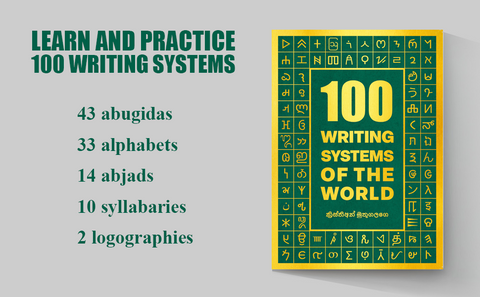Unveiling the Mysteries of the Futhark Script: Exploring the Ancient Runic Writing System
1. Script type: The Futhark script is an ancient runic writing system, primarily used by Germanic peoples during the early Middle Ages. It is classified as an alphabet, with each symbol representing a specific sound or phoneme.
2. Writing direction: The Futhark script was traditionally written from right to left. However, with the influence of Latin script, the writing direction eventually shifted to left to right.
3. Creator and invention time: The Futhark script was not created by a single individual. It evolved organically over time within the Germanic cultures. The exact time of its invention is uncertain, but it emerged during the Migration Period, around the 2nd to 8th centuries CE.
4. Time period of use: The Futhark script was widely used from the 2nd to the 11th century CE. It played a significant role in Germanic societies, with inscriptions found on various artifacts, including runestones, jewelry, tools, and weapons.
5. Population and current usage: The Futhark script is no longer actively used as a writing system. However, its historical significance and cultural value have led to its continued study and occasional decorative use in modern contexts.
6. Usage area: Geographically, the Futhark script was used by Germanic peoples across Northern Europe, including areas that now comprise modern-day Scandinavia, Germany, and the British Isles.
7. Languages associated with the script: The Futhark script was used to write various Germanic languages of the time, including Old Norse, Old English, Old High German, and Old Saxon. It served as a means of communication, recording important information, and preserving cultural and historical narratives.
Interesting Facts:
- The term "Futhark" is derived from the first six runic letters: F, U, Þ (pronounced "thorn"), A, R, and K. This sequence of letters forms the name of the runic alphabet.
- The Futhark script is divided into three main forms: the Elder Futhark, the Younger Futhark, and the Anglo-Saxon Futhorc. Each form has variations in the number and shape of its runic characters.
- Runes were not only used for writing but also held a deep symbolic and magical significance in Germanic cultures. They were associated with divination, protection, and communication with the spiritual realm.
- The Futhark script was predominantly carved into stone or wood, reflecting its origins as a script used for inscriptions and monumental purposes.
- The Futhark script gradually fell out of use with the spread of Christianity and the adoption of the Latin alphabet. However, runic inscriptions continued to be employed in certain contexts, such as personal names, until the Middle Ages.
- The study of runology, the discipline dedicated to the study of runes and runic inscriptions, has provided valuable insights into the language, culture, and history of Germanic peoples during the medieval period.
- Today, the Futhark script holds a special place in popular culture, often associated with Norse mythology, Vikings, and mysticism. It has inspired the creation of various modern runic fonts, artwork, and even forms of divination such as "rune casting."
The Futhark script stands as a testament to the linguistic and cultural heritage of the Germanic peoples. Through its unique symbols and historical significance, it offers a glimpse into the rich tapestry of early medieval societies. While no longer in practical use, the Futhark script continues to captivate the imagination and evoke a sense of connection to the ancient past.

Practice Futhark and other scripts with our book "100 Writing Systems of the World"!
Discover 100 diverse writing systems from around the globe in one captivating book. Practice writing different scripts with full character charts and essential information provided. Let your imagination soar on the blank right pages as you explore 43 abugidas, 33 alphabets, 14 abjads, 10 syllabaries, and 2 logographic scripts. Dive into numeral systems and even design your own writing system. Immerse yourself in the beauty and diversity of global scripts today with "100 Writing Systems of the World." Unleash your creativity and order now!
